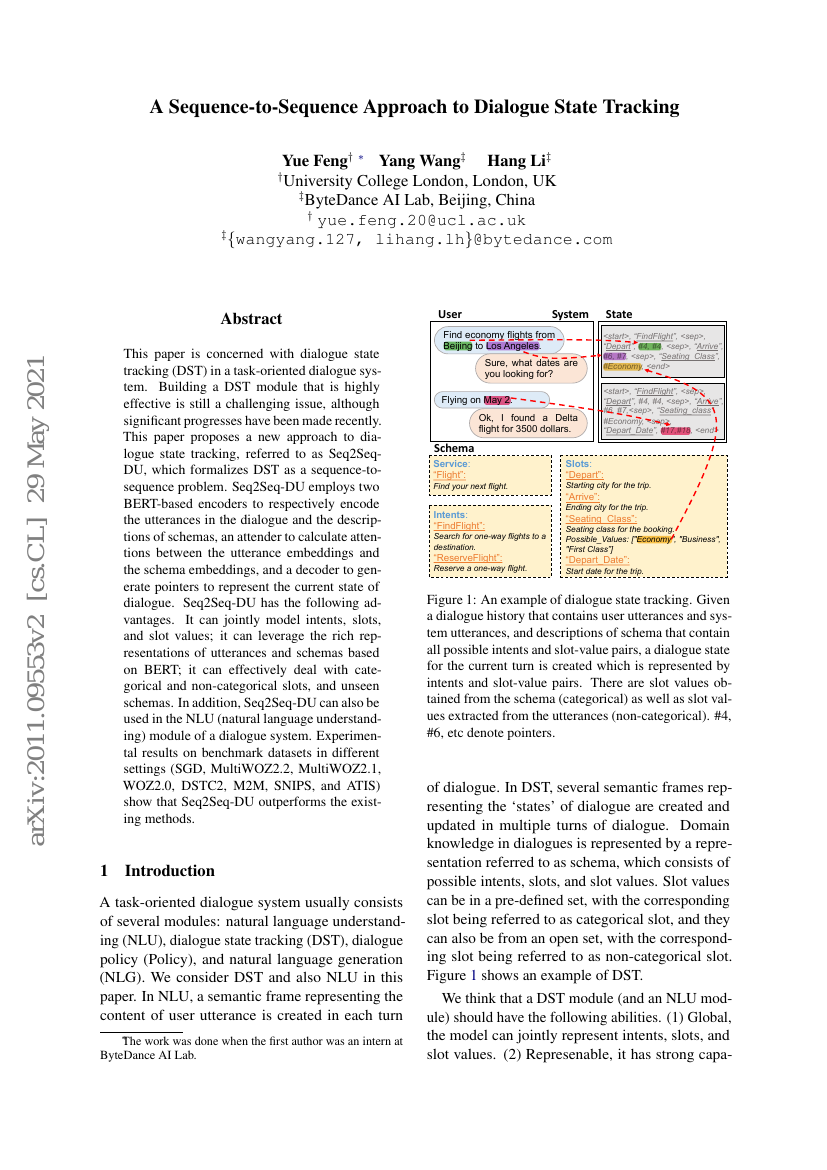Command Palette
Search for a command to run...
Yue Feng Yang Wang Hang Li

Abstract
This paper is concerned with dialogue state tracking (DST) in a task-oriented dialogue system. Building a DST module that is highly effective is still a challenging issue, although significant progresses have been made recently. This paper proposes a new approach to dialogue state tracking, referred to as Seq2Seq-DU, which formalizes DST as a sequence-to-sequence problem. Seq2Seq-DU employs two BERT-based encoders to respectively encode the utterances in the dialogue and the descriptions of schemas, an attender to calculate attentions between the utterance embeddings and the schema embeddings, and a decoder to generate pointers to represent the current state of dialogue. Seq2Seq-DU has the following advantages. It can jointly model intents, slots, and slot values; it can leverage the rich representations of utterances and schemas based on BERT; it can effectively deal with categorical and non-categorical slots, and unseen schemas. In addition, Seq2Seq-DU can also be used in the NLU (natural language understanding) module of a dialogue system. Experimental results on benchmark datasets in different settings (SGD, MultiWOZ2.2, MultiWOZ2.1, WOZ2.0, DSTC2, M2M, SNIPS, and ATIS) show that Seq2Seq-DU outperforms the existing methods.
Code Repositories
Benchmarks
| Benchmark | Methodology | Metrics |
|---|---|---|
| classification-on-sgd | SGD_ss | F1 (Seqeval): 2020 |
| dialogue-state-tracking-on-second-dialogue | Seq2Seq-DU-w/oSchema | Joint: 85 |
| dialogue-state-tracking-on-wizard-of-oz | Seq2Seq-DU-w/oSchema | Joint: 91.2 |
Build AI with AI
From idea to launch — accelerate your AI development with free AI co-coding, out-of-the-box environment and best price of GPUs.